Introduction to Plants -> bones
Bones
Bones are an important part of the human body's skeletal system. They provide structural support, protect vital organs, and are involved in the production of blood cells. Let's take a closer look at the structure and functions of bones.
Structure of Bones
Bones are made up of two types of tissue: compact bone and spongy bone. Compact bone is the hard, outer layer of the bone, while spongy bone is the inner, porous layer. Within the bone, there is also bone marrow, which is responsible for producing blood cells.
Functions of Bones
Bones serve several important functions in the body:
- Support: Bones provide a framework for the body, allowing us to stand, sit, and move.
- Protection: Bones protect vital organs such as the brain, heart, and lungs.
- Movement: Muscles are attached to bones, and when muscles contract, they pull on the bones, allowing us to move.
- Production of Blood Cells: Bone marrow produces red blood cells, white blood cells, and platelets.
- Mineral Storage: Bones store minerals such as calcium and phosphorus, which are essential for bone strength and other bodily functions.
Types of Bones
There are five main types of bones in the human body:
- Long bones: Found in the arms, legs, fingers, and toes. They are longer than they are wide and are responsible for supporting weight and facilitating movement.
- Short bones: Found in the wrists and ankles. They provide stability and support in the body.
- Flat bones: Found in the skull, ribs, and shoulder blades. They provide protection for internal organs and offer a broad surface for muscle attachment.
- Irregular bones: Found in the spine and hips. They have complex shapes and provide support and protection.
- Sesamoid bones: These are small, round bones found embedded in tendons. The patella (kneecap) is the largest sesamoid bone in the body.
Common Bone Disorders
There are several common disorders that can affect the skeletal system:
- Osteoporosis: A condition characterized by weak, brittle bones that are more prone to fractures.
- Osteoarthritis: A degenerative joint disease that can affect the joints in the body, including those in the spine, hands, hips, and knees.
- Rickets: A condition that affects bone development in children, often due to a deficiency in vitamin D, calcium, or phosphate.
- What are the two types of tissue that make up bones?
- What is the function of bone marrow?
- Which type of bone is responsible for supporting weight and facilitating movement?
- What are some common bone disorders?
◂Science Worksheets and Study Guides Seventh Grade. Introduction to Plants
Study Guide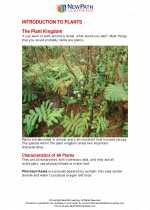 Introduction to Plants
Introduction to Plants  Worksheet/Answer key
Worksheet/Answer key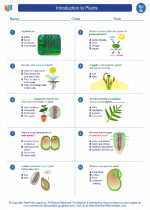 Introduction to Plants
Introduction to Plants  Worksheet/Answer key
Worksheet/Answer key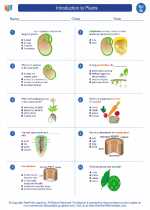 Introduction to Plants
Introduction to Plants  Worksheet/Answer key
Worksheet/Answer key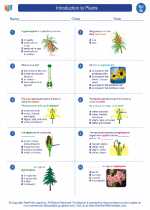 Introduction to Plants
Introduction to Plants  Worksheet/Answer key
Worksheet/Answer key Introduction to Plants
Introduction to Plants  Vocabulary/Answer key
Vocabulary/Answer key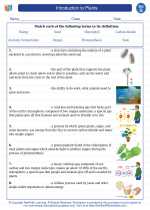 Introduction to Plants
Introduction to Plants  Vocabulary/Answer key
Vocabulary/Answer key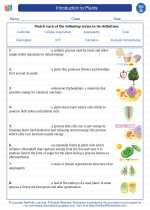 Introduction to Plants
Introduction to Plants  Vocabulary/Answer key
Vocabulary/Answer key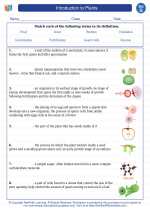 Introduction to Plants
Introduction to Plants  Vocabulary/Answer key
Vocabulary/Answer key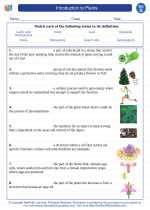 Introduction to Plants
Introduction to Plants  Vocabulary/Answer key
Vocabulary/Answer key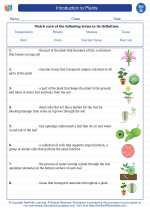 Introduction to Plants
Introduction to Plants 

 Worksheet/Answer key
Worksheet/Answer key
 Worksheet/Answer key
Worksheet/Answer key
 Worksheet/Answer key
Worksheet/Answer key
 Worksheet/Answer key
Worksheet/Answer key
 Vocabulary/Answer key
Vocabulary/Answer key
 Vocabulary/Answer key
Vocabulary/Answer key
 Vocabulary/Answer key
Vocabulary/Answer key
 Vocabulary/Answer key
Vocabulary/Answer key
 Vocabulary/Answer key
Vocabulary/Answer key

The resources above cover the following skills:
LIFE SCIENCE
Ecosystems: Interactions, Energy, and Dynamics
Use evidence and scientific reasoning to explain how characteristic animal behaviors (e.g., building nests to protect young from cold, herding to protect young from predators, attracting mates for breeding by producing special sounds and displaying colorful plumage, transferring pollen or seeds to create conditions for seed germination and growth) and specialized plant structures (e.g., flower brightness, nectar, and odor attracting birds that transfer pollen; hard outer shells on seeds providing protection prior to germination) affect the probability of successful reproduction of both animals and plants.